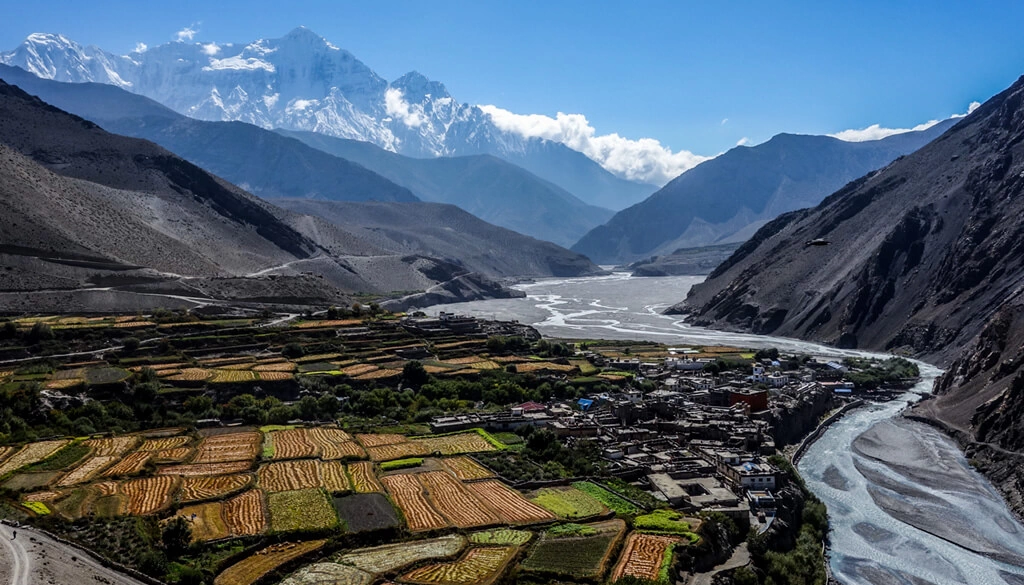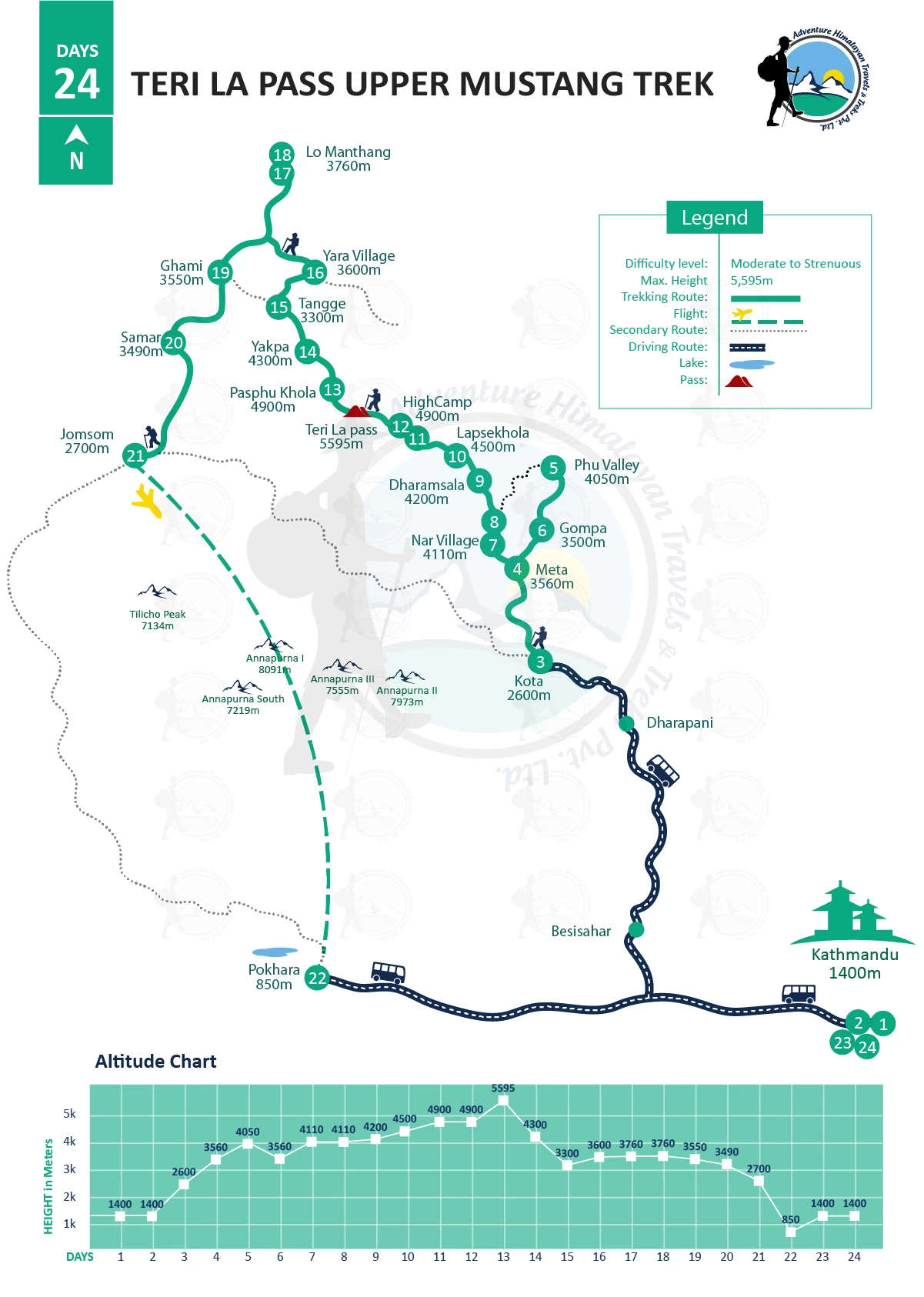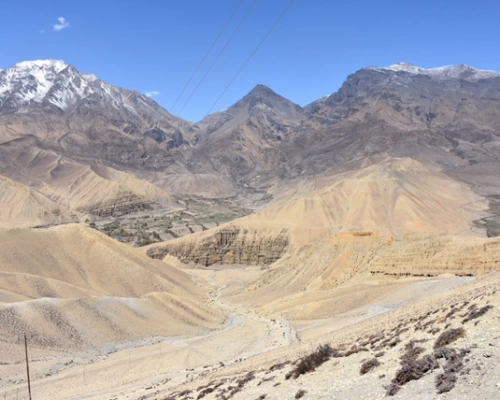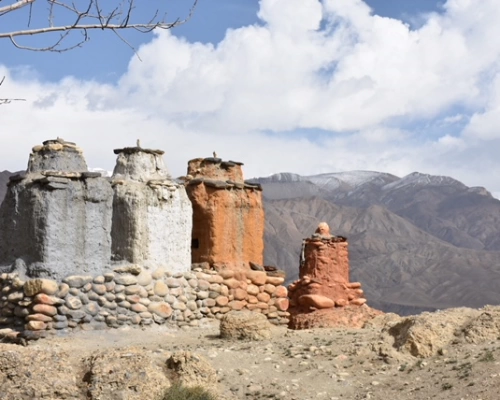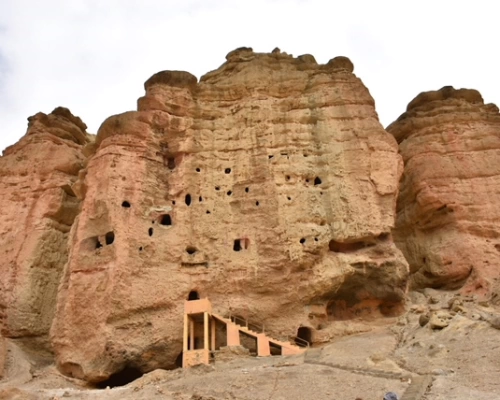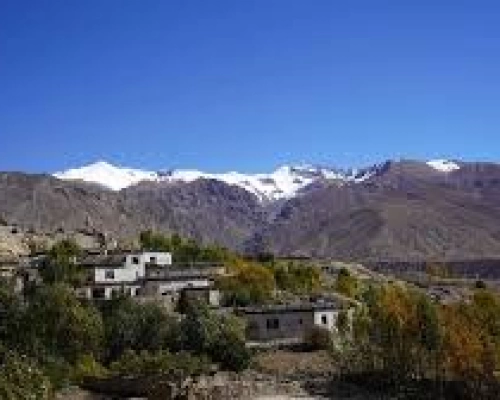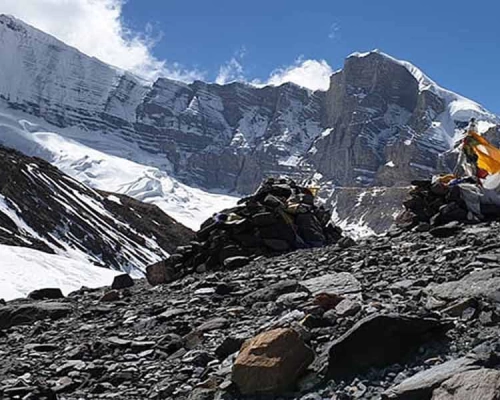The Teri La Pass Upper Mustang Trek is an adventurous journey through the relatively new, remote, and culturally rich region of Upper Mustang in the north-central part of Nepal. This adventuresome alpine rambling offers an incredibly diverse and scenic landscape, a visit to spiritually profound monasteries, and an insider indulgence and engagement in the typical Tibetan Buddhist culture.
If you are fond of unique Himalayan beauty, this trek to Teri La Pass Upper Mustang is made just for you, featuring stunning lunar-like landscapes, high snow-capped peaks including Dhaulagiri ranges, Annapurna, Damodar Himal, Tilicho Peak, Gangapurna and its neighboring ranges, and untouched Himalayan cultures that flourished in isolation from the rest of the world as you passed by several notable traditional settlements such as Kota, Meta, Nar and Phu Valley, Lo Manthang, and Ghami.
Hence, this combined odyssey to the Teri La Pass and Upper Mustang stands out as the best remote journey to the Himalayas to discover the genuine nature’s wonder and the culture born and brought within the region from the rest of other more popular higher Himalayan hiking like the Everest Base Camp and Kala Patthar, Annapurna Base Camp, Annapurna Circuit, and Langtang Valley, requiring special permits that might not be necessary for several other longer Himalayan excursions in the country.
What makes trekking to the Teri La Pass Upper Mustang Special?
The Teri La Pass Upper Mustang Trek caters to the interests of every trekker with reasonable physical fitness and some preparation for a high-altitude voyage. A longer trekking itinerary through the Upper Mustang is nestled between the majestic mountain peaks of the Annapurna and Dhaulagiri ranges.
Besides its remoteness, the Upper Mustang shares the border with Tibet and hence is one of the highly restricted areas where entering without a special permit is strictly prohibited and allows only a limited number of visitors per year, which gives trekkers, ramblers, and travelers access to the well-preserved ancient monasteries, remote villages, and other visual feasts of the region to expect:
The remote and untouched wilderness of the Upper Mustang region
Upper Mustang is one of the most remote countryside parts of the Nepalese Himalayas that hosts a comparatively smaller number of travelers, often referred to as a “hidden kingdom,” which was not opened to foreigners until 1992. It is still one of the most restricted areas in Nepal, which has helped to retain the region’s unique ancient Tibetan culture through monasteries dating centuries back, mani walls, chortens, and pristine natural beauty.
During the cultural pilgrimage to the Upper Mustang on crossing the demanding Teri La Pass, you will get to explore the capital city of the Mustang Trekking region called Lo Manthang, a walled city with medieval-era architecture and royal palaces in the rain shadows area of the Himalayas, which hence provides a chilling sense of peace and solitude that is rare in more hyped trekking destinations.
While the isolation enhances the adventurous and exploration spirit, despite the remote location of the Upper Mustang, several initiatives are taken to promote sustainable tourism to balance the influx of visitors with the preservation of its cultural and natural integrity.
The scenic challenge, the crossing of Teri La Pass
Elevated at an altitude of 5,595 m/18,356 ft, Teri La Pass is one of the remarkable passes in the Mustang region that you will cross to officially enter the secluded realm of the Nepalese Himalayas within the rain shadow of Annapurna and Dhaulagiri, Upper Mustang, which offers a vast diversity in landscape generally characterized by desert-like terrain with exclusive rock formations and lush valleys, a literal visual feast that is one of the major trek’s attractions.
These distinctive rock formations and colorful cliffs due to centuries of wind erosion are one-of-a-kind, natural sculptures adding much to the surreal quality of the landscape that particularly seems to glow with the early morning during sunrise and late afternoon at sunset.
However, one has to be properly prepared and adequately acclimatized for the high altitude challenge, steep climbs and descents, and varying weather conditions to successfully cross Teri La Pass, marking a major achievement for trekkers traversing the combined journey to Teri La Pass and Upper Mustang.
Therefore, as the ascent to Teri La Pass offers a blend of natural splendor, physical challenge, and rewards, the crooking of the pass on the way to Upper Mustang is considered a scenic challenge worth every step.
Reach the historical kingdom of Himalayas, Lo Manthang
Established in 1380 by Ame Pal, Lo Manthang served as the capital city of the former Kingdom of Lo, consisting of a 6-meter-high wall encompassing narrow alleys, several ancient buildings, and monasteries, creating a timeless ambiance to relish during the Himalayan trip to Upper Mustang on crossing the Teri La Pass.
This Himalayan town boasts the most prominent structure of the entire region: the 4-story royal palace built in the 15th century, a symbol of Lo Manthang’s royal heritage alongside the Jampa Lhakhang, Thubchen Gompa, Chodey Gompa, and Choprang Gompa, featuring religious murals, a large clay statue of Maitreya Buddha (the future Buddha), beautiful frescoes, and ancient artifacts followed by daily rituals and ceremonies.
Despite political changes, the city has preserved much of its traditional Tibetan Buddhist culture, looked over by the towering tops of the world into the heart of an ancient Himalayan kingdom often referred to as the Himal Pari ko Gaon, that you can be the first ones to encounter on embarking on an unforgettable journey to the Teri La Pass Upper Mustang.
The Most Happening Himalayan Voyage in the Monsoon Season
Although the summer/monsoon season in Nepal is not recommended for a longer high-altitude expedition, the Teri La Pass Upper Mustang meticulously stands as the epitome of Himalayan adventure, specifically during the monsoon season.
Situated in the rain shadow area of the Annapurna and Dhaulagiri ranges, the chances of observing rain showers even during the monsoon or summer on the trekking route leading to Upper Mustang are very low, which still challenges the body, stirs the soul, and leaves a lasting impression of the raw, untamed allure of the Himalayas.
On partaking in the journey to Teri La Pass, Upper Mustang, during the monsoon season, it becomes more than just a trek to experience the fresh nature in the lower region, just washed by rain, lush forests, and full of seasonal flowers, evoking the raw Himalayan wilderness and calling for a transformative odyssey of a lifetime passing through traditional Himalayan settlement frozen in time, where the Tibetan culture and pristine nature thrive against the backdrop of the dynasty mountain giants.
To conclude, the Teri La Pass Upper Mustang holds a mystical beauty that attracts adventurers throughout the year, making it the best summer trek alternative if you are seeking one to conquer in the monsoon holidays of 2024 to enjoy the thrill of an extra layer of enchantment and thrill.
The warm hospitality of the local communities
People visit Nepal for the hills and mountains; however, they return for the locals of the Himalayas!
This Teri La Pass Upper Mustang Trek might be exactly what it is referring to, as there’s no need to camp through all the trek days and you get to spend comfortable nights at tea houses and local lodges opened by natives bearing distinctive culture, traditions, and customs residing within the Mustang region, adding a special dimension to crafting a legendary classical trek in the Himalayas.
The villagers along the trekking route to the Teri La Pass Upper Mustang are usually smiling ethnic groups of the country who love welcoming guests with a belief that the god visits them in the form of god and often extends a helping hand to trekkers, travelers, climbers, and hikers alike.
In the lower region of Mustang, around Jomsom, you will find Thakali, Gurung, and Magar communities, while the upper Mustang is dominated by the Tibetan-Buddhist communities. During your trip, it would be an extraordinarily enriching experience to interact with these locals and get an insight into their daily lives.
If your trek time to the Teri La Pass Upper Mustang coincides with some of the greatest festivals in the region, such as Tilij, the locals are admiringly accepting enough to even invite trekkers to join and celebrate or participate in many grand ceremonies, letting you access an authentic trek experience and deepening your appreciation of the local culture.
Every bond formed en route to the trekking trail of Teri La Pass, Upper Mustang, is genuine enough to overwhelm anyone, with the locals' greatest comfort of compassion providing a home away from home environment, transforming the trek into a soulful journey enriching the soul and broadening the heart.
The 24-day itinerary and trekking route to the Teri La Pass Upper Mustang
Similar to many high Himalayan journeys in Nepal, there are multiple itineraries and trekking routes one can choose to go for Teri La Pass Upper Mustang Trekking which caters to your area of interest, and time constraints, and meets your needs and preferences. Adventure Himalayan Travels and Treks (AHT&T) presents you with a 24-day journey so you get to experience and relish everything the Upper Mustang has to offer.
Unlike other trails to the Upper Mustang in the 24-day itinerary by ATH&T, Kota functions as the starting point, allocating several days and time for acclimatization and exploring the cultural and natural wonders of the Upper Mustang, moving forth via Meta, Nar Phu Valley, Gompa, Dharamshala, Lapse Khola, Papshu Khola, Yakpa, Tange, Yara Village, Lo Manthang, Ghami, Samar, Jomsom, and finally Pokhara.
From Pokhara, you will have the option of beginning yet another Himalayan journey, such as the Jomsom Trek and Chitwan Explore, or a short hike to the Annapurna region, including the Ghorpani Poonhill Trek, Mohare Danda Tour, Khopra Danda, Khayer Lake, and Poon Hill Expedition, or directly heading to Kathmandu for the next day departure from the country itself.
The crossing of the challenging mountain pass according to this 24-day itinerary and trekking routes is on the 13th trek day, by which time trekkers must have been used to hiking for a long time in the high altitude, so conquering the pass should not be a problem. However, if you see any symptoms of altitude sickness or acute mountain sickness (AMS), be at ease and inform your mountain guides so they can aid you in not letting it get severe.
Hence, the 24-day itinerary for an extraordinary odyssey to the Teri La Pass Upper Mustang is considered the best one offering a perfect blend of challenging and rewarding terrain, cultural immersion, breathtaking vistas, ample acclimatization in one of the Himalayas’s most captivating and less travelled regions.
Further, this route and itinerary can be customized and made more personal based on what you are seeking from this trip to the Upper Mustang via Teri La Pass. Let us know your preferences, and contact us now for your memorable jaunt to the Himalayas.
Teri La Pass Upper Mustang 24 Days Trek Cost
At Adventure Himalayan Travels and Treks (AHT&T), we offer a group discount on our package cost for various travel, treks, and tours you do with us, including the Teri La Pass Trek, which can cost you between USD 4,000 and USD 5,000 in the budget plan, USD 4,500 and USD 5,000 for the standard package, and USD 5,000 and USD 6,000 for a more luxurious experience. That normally is:
- USD 3,775 for 2-3 pax
- USD 3675 for 4-6 pax
- USD 3575 for 7-10 pax
- USD 3475 for 11–14 pax
